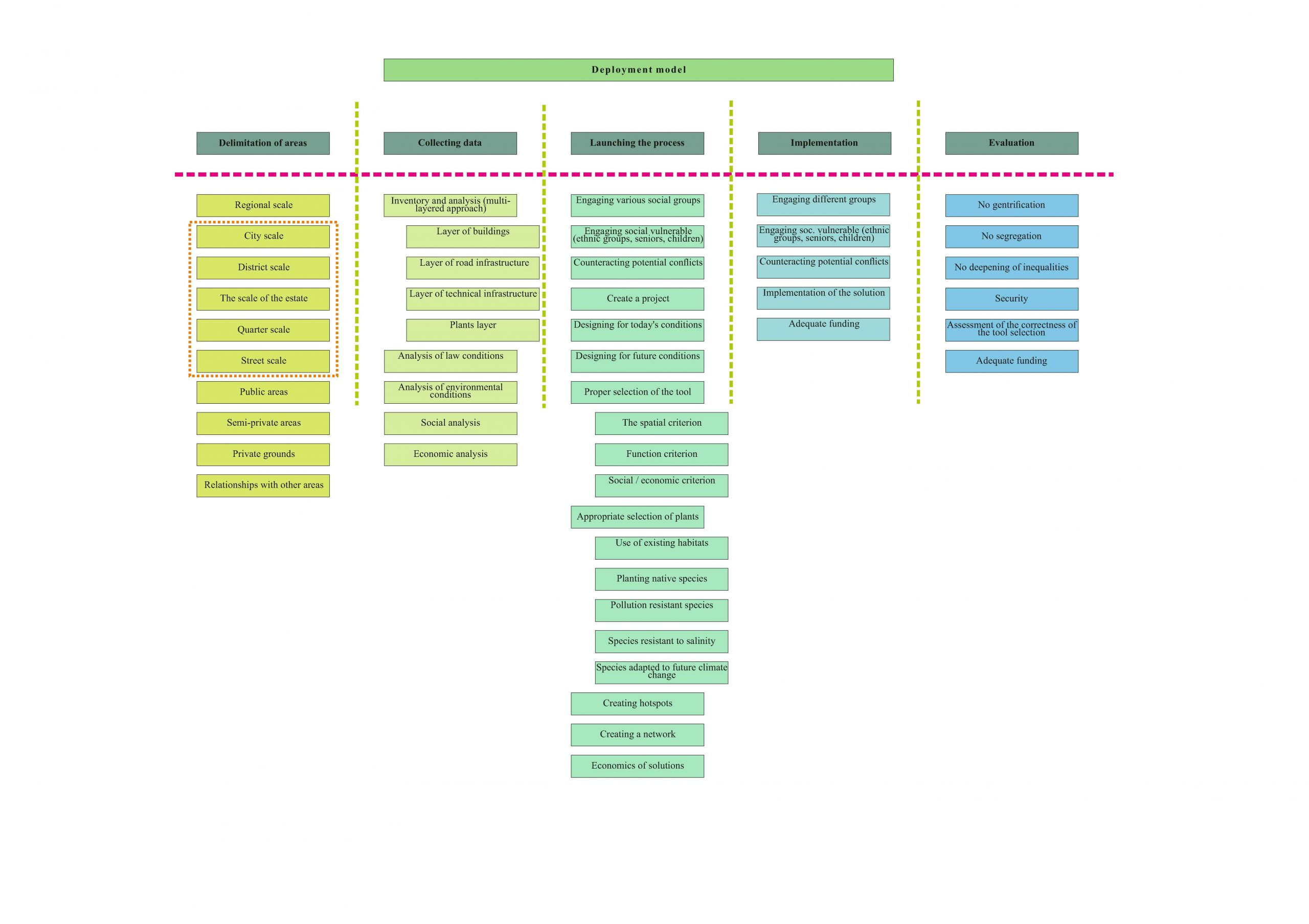Models
NBS solutions are used in cities, among others, as part of urban adaptation to climate change or mitigation of the effects of climate change. NBS solutions can be designed as a component of the newly created urban tissue, but also can be introduced into the existing urban tissue. Its role as a component of the renewal of degraded urban space (an intervention carried out simultaneously with the revitalization process) is especially emphasized for the benefit of local communities, not only in terms of health, environment, but also economically.
These solutions can be implemented on various scales: regional, but also on a city scale (district, housing estate, quarter or street), both in public and private areas.
Having designed the area where we are going to implement appropriate solutions, we must carry out an inventory of the space and prepare complex environmental, spatial, legal, social and economic analyzes.
These activities provide the basis for the development of the concept of land development, as well as the selection of NBS tools appropriate to the given conditions. These actions should be carried out with the involvement of various social groups and preceded by information and educational activities. We also have to anticipate barriers to implementing individual solutions and conflicts, too. An important aspect is that the proposed tools are designed for the current and future environmental, social, spatial and economic conditions, and that they do not cause negative effects, e.g., in the form of green gentrification or climate gentrification. It is also crucial to consider the sources of financing the implemented solution, also taking into account its future functioning. At the same time, the economic benefits for local communities arising from the implementation of a given solution must be emphasized (which is an important component of local Community acceptance).
The next stage is the creation of project documentation and implementation of solutions in a defined urban space. It is crucial to exploit the existing potential of the place, both social and environmental. Involvement of local communities in the implementation of solutions and usage of the existing resources (recycling, native vegetation, processes taking place in nature – e.g., secondary succession) are important.
The implementation of solutions must be carried out in such a way so as to create a network of connections between individual tools. These ties should be created in such a way that the areas that need intervention have connectivity with the green areas (which, by definition, do not need such intervention), which will allow us to exchange information between the nodes in short distribution chains. This will allow for the stable maintenance of the entire system.
The individual NBS tools should create a system of interconnected objects (the implementation of just one tool in a given space will not significantly improve the urban environment and its adaptation to climate change.
Examples of tool chains that we can create:
Green roof + green wall + rain garden
Bioswales + retention reservoirs + urban wetlands
City orchards + community gardens + city meadows
After completing the implementation of the transformation / implantation of given NBS solutions, in order to adapt the urban space / activities mitigating the effects of climate change, we must monitor the space and evaluate the proposed solutions. We have to answer the following questions: Was the choice of tools right, did the tools we chose fulfilled their functions, did we select the appropriate plants, did we not trigger the phenomenon of gentrification, did we not contribute to spatial segregation, is the space safe for residents, are the selected solutions accepted by residents, etc.?
Model of implementing NBS solutions in cities within the existing urban tissue.

Sample models for various city areas are also included:
Warsaw (Praga Północ, Wola – more detailed model)
Buenos Aires, Argentina (general model)
Santo Domingo, Dominican Republic (general model)
